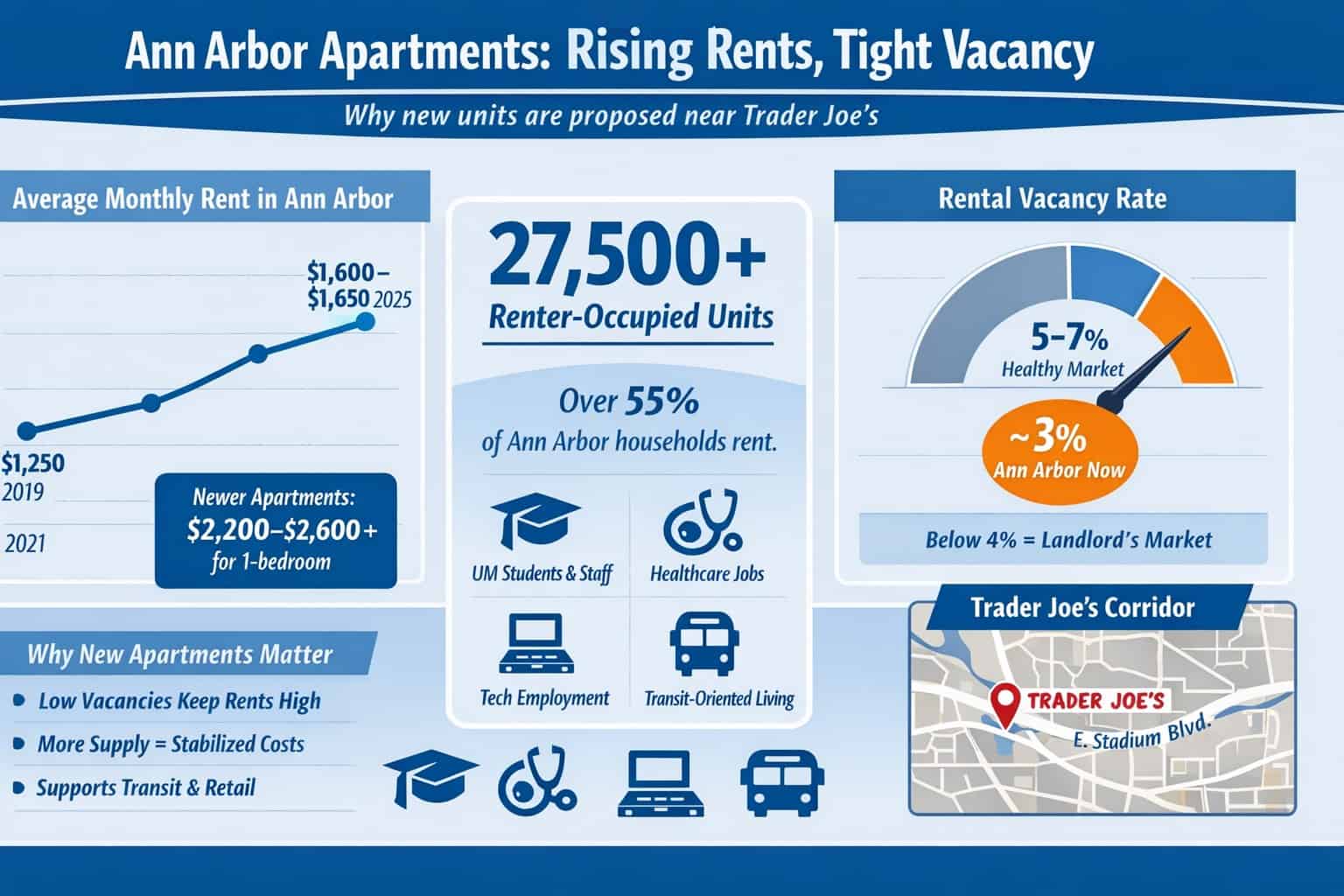DETROIT – The first 3D-printed house in Michigan is on the market. Asking price: $224,500. The tidy cottage a few blocks from the Belle Isle Bridge is hard to miss.
It’s brand new and modest — just 988 square feet — in a neighborhood of aging houses that reflect the outsized wealth of mid-century Detroit. Its walls were squeezed like toothpaste out of a nozzle on a robotic arm, one thin layer at a time. And it’s priced far above the city’s estimated average sale price of $82,000.
Is this an expensive oddity, or the first shot in a homebuilding revolution that will drive down housing costs and change the way our homes look and feel?
Citizen Robotics, the nonprofit behind the project, believes that automation will eventually drive down home prices if the technology becomes widespread.
That’s a big “if,” but we don’t want to write off any attempt to tackle Detroit’s housing affordability problem, even when the fix seems far off. Plus this spot looks kinda cozy! Here’s what you need to know.
The company’s 10-foot robotic arm, which it bought secondhand, sits in the center of a warehouse in Southwest Detroit. A few feet away, a tower of machinery sits ready to mix a special concrete blend and pump it to the tip of the robotic arm.
The walls of a 3D-printed house start as a two-dimensional shape and grow upward. A wall might begin as a rectangle with rounded corners.
To build the wall, the robotic arm repeatedly traces this shape. Following a digital blueprint, it adds another narrow bead of wet concrete with each pass, leaving gaps for electrical outlets. The specially formulated material dries quickly, and the wall rises 10 to 15 millimeters with every new layer. (Fancier machines can speed up the process by adding new layers to several walls at once.)
Completed wall sections are shipped to the new home site, where they are connected. The roof, plumbing and electrical wiring are added through more conventional methods by tradespeople.
To read more, click on Outlier Media






